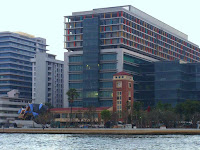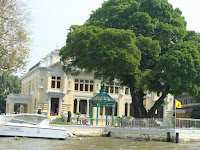Wat Kanlayamit

One of the nine most sacred temples in Bangkok, this temple was built around 200 years ago by a rich Chinese nobleman and donated to King Rama III, who named it Wat Kanlayamit . The King commissioned a huge sitting Buddha image to be placed in a newly-built main hall, and King Rama IV later added a library for religious scriptures. The main building is in Thai style, but most of the other buildings clearly show a Chinese influence on building style and decorations. map
















